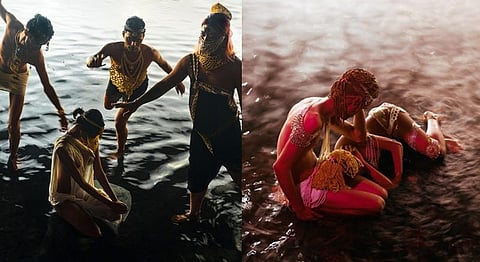
- HOMEGROWN WORLD
- #HGCREATORS
- #HGEXPLORE
- #HGVOICES
- #HGSHOP
- CAREERS
- ABOUT US
- CONTACT US

The ‘modern’ young Indian likes to wear pride and support on their sleeve, well, more so on social media pages in the form of photo filters. Scroll through your newsfeed and you’ll find an array of coloured filters, a rainbow of LGBTQ support, but what does this really achieve? That filter on your picture may show the community that there are people standing with them in their fight, but sometimes that pride flag filter doesn’t really translate into on-ground action. The problem remains that although the LGBTQ community has now, for a lack of a better word, come out into open as a force to reckon with in society and increasing their visibility, there is still a gaping hole when it comes to acceptance and representation of their normalcy.
It shouldn’t have to be the ‘LGBTQ’ community or ‘gay’ film or literature, but just any other human whose sexuality is just one aspect of their being. This gets hard considering that in India Section 377 still exists, for some ridiculous reason, criminalising what society and the legal system views as countering ‘normalcy.’ “What is unnatural? What is the tritiya prakriti or the third nature? Something that does not conform to societal norms. The third nature is the new wrong that needs to be righted,” says photographer Sandeep Dhopate. The argument against homosexuality, or any kind of sexualisation of humans is the ‘unnatural’ tag given to it. India is a country where religion has a special kind of stronghold that dictates a person’s lifestyles, beliefs and behaviours. Along with religion, it’s Indian traditions and cultural norms that sees sexual activity purely for the purpose of reproduction. Expressing sexual desires of any kind with anyone, queer or heterosexual, is ‘wrong.’
“Through my work I want to explore the overlap between spirituality and sensuality in the Indian context. I want to understand the concept of religion and how society uses it to address contemporary issues. What irks me the most is the way religious teachings, which always show the path of love and caring, are either misunderstood or misrepresented by society to self-righteously justify unreasonable social activism,” says Dhopate, talking about his upcoming exhibition, Tṛtīya Prakṛti that, in a way, addresses the hypocrisy that exists in the country. Gender-bending and exploration sexuality, hetersexual and homosexual, has long been stigmatized as a whole being linked to discrimination against homosexuality and the LGBTQ community. What’s interesting, and contradictory, is that such a thing existing in India through history which Dhopate explores through the lens of Hinduism and its beliefs.
“Ancient religious texts like the Kamasutra, the Manusmriti, the Atharvaveda, the Shiv Purana have mention of our society being aware of homosexuality. Yet, society today blames homosexuality in India on western influences that have ‘corrupted’ us ‘innocent’ Indians. I find that to be ill-informed. We have legends of Gods applying makeup, changing gender, have same sex relationships, and so on. Granted, these could be just myths or stories, but the point is if these books were written thousands of years ago then our society has been aware of it ever since. Why do we insist on misconstruing these stories to fit our moral acceptance, and not look at them from a purely analytical angle,” expresses Dhopate.
“We all know what happened to the culprits of the Nirbhaya case and so many more. If we have no tolerance of homosexuality today and article 377 is the most befitting answer to these “criminals” then let us also apply all other ancient laws to every other crime. It almost feels like if something wrong is accepted by a majority, then the society at large decides to tweak their brains into accepting it as right. If that is the case, then, if we have righted so many wrongs, why can’t we right this wrong too and just let people live and let love. War needs to be punished, not love.”
Dhopate questions India’s understanding of its past, the key problem here being an education system that has barely been altered since colonial times. Education, what is taught to young minds — how to think, how to behave, what’s right and wrong, history, politics and society, the model needs to mould itself to changing times as we evolve as a society. “I find bridging this gap to be a monumental task, one that is spiralling out of control,” says Dhopate, and that is exactly what he does through his visualisations in Tṛtīya Prakṛti.
We’ve posted below a short preview of what you can expect at the exhibition, on January 21, in collaboration with Godrej India Culture Lab and The Gaysi Family who will be showcasing the newest edition of The Gaysi Zine. Dhopate’s work will be showcased through the day and he will also be holding a walkthrough from 5 to 530 PM. You can find more information here on the event page.
